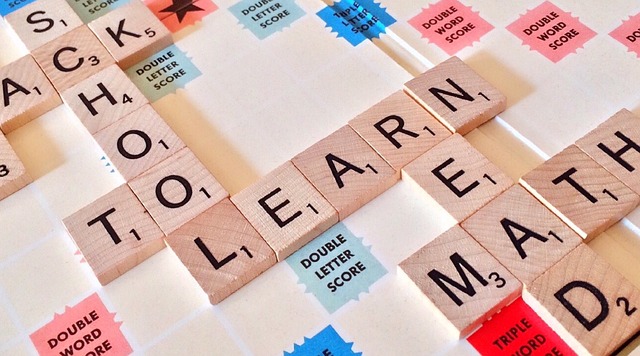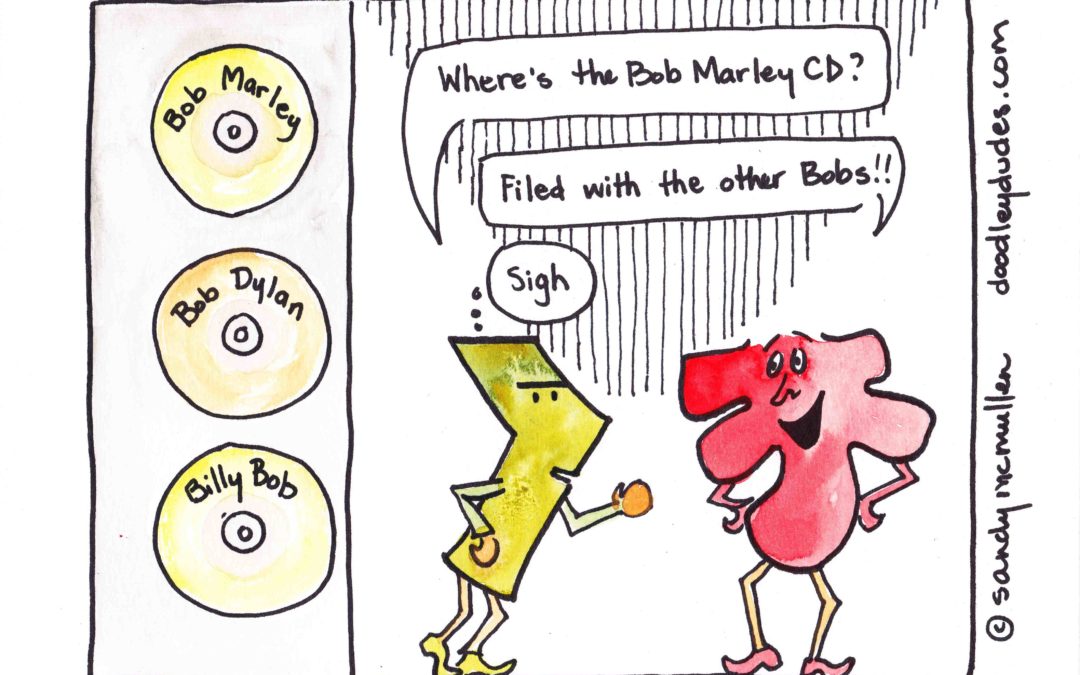
by Sandy | Jan 12, 2018 | MBTI Facts
The joys of the English language
Words are often laden with baggage and assumptions that fall far from the original usage of the word. Now multiply that by X when a particular discipline assigns a definition that is precise and possibly outside of the day to day meaning of the word.
What is Feeling anyway?
Yesterday I was talking to a man with a preference for Thinking and a woman with a preference for Feeling. A couple of misconceptions surfaced during our conversation. The first is that men have a Thinking preference and that women are the ones with a Feeling preference. The short answer to that assumption is NOT TRUE. I will save my longer answer for another post.
The second thing that I became aware of is how easily we slipped into talking about an emotional reaction that someone had to a specific situation and equating that to the preference for Feeling.
In the MBTI, Feeling is one of two ways of making decisions. People with a preference for Feeling base their decisions primarily on values and on subjective evaluation of person-centered concerns. On the other hand, those with a preference for Thinking base their decisions on logic and objective analysis of cause and effect. Both are valuable ways of making a decision. Period. One is not better than the other and the best decisions reflect both functions. You can read more about the characteristics of these two function preferences here.
Thinkers have feelings and vice-versa
It seems easy to slip from the purity of the definition to include other things that the word itself suggests. When we are talking about Feeling in the context of MBTI it refers solely to making decisions. It does not refer to how we react to events in an emotional manner. When we are talking about “having feelings” both thinkers and feelers feel. Feeling is indeed a rational function. Making decisions based on values requires applying the laws of reason. Those with a preference for Feeling can also be rational, logical and analytical.
Believe me when I say that, as a person with a preference for Feeling, I can also have a strong negative reaction to inappropriate displays of emotion – especially when someone appears “needy”. This isn’t something reserved for those with a Thinking preference. Emoting and affect simply isn’t what Feeling refers to in an MBTI context. I have also experience genuine compassion, care and understanding from Thinking types… more so at times than I could ever offer.
Check your interpretations at the door
These interpretations happen all the time not just with the Myers Briggs. Becoming aware of the assumptions that we are operating under is an ongoing journey. Please don’t confuse being “emotional” or being “needy” with having a preference for Feeling. It helps to go back to the definition as used in the context of the Myers Briggs and not muddy the waters.
Do you have emotions or do emotions have you?

by Sandy | Jan 11, 2018 | MBTI Facts
Here’s a wee story. This one happened to occur in a pottery class.
There is a local storefront that has a display of hand built and thrown pottery tempting people to wander in to see and touch. Once inside you notice that just behind the display is a working studio with people hunched over a lump of clay trying to get it centered directly in the middle so the creating of bowls and cups and other treasures could begin.
There is something primal about clay. Just getting your hands into the mud and water allows you to go to another place that takes you away from the clutter of your mind. Indeed you need to be able to let go and center yourself before you can hope to center clay on the potter’s wheel.
A friend was telling me about seeing this scenario and signing up for classes hoping to partake in this engrossing creative environment. Unfortunately someone with a preference for Extraversion who also happened to be asleep to her behaviour and its impact on others also signed up. She was loud and chatty. She simply saw silence as a void to be filled and kept a loud stream of noise going throughout the class.
Now it is easy to see how Extraverts can be disruptive. I am sure that many polite people in the class wanted to scream “BE QUIET!” However any behaviour taken to the extreme or inappropriate to the circumstances can have a negative impact on others. I have also met people who complain about living with those who don’t talk, those who over-analyze, those who are impulsive and on it goes.
We create our own reality.
I have heard that phrase many times from teachers, and have embraced the idea behind these words. What I pay attention to becomes what is real for me. I suppose the trick is to recognize the implications of my filtering system and to recognize that there is so much to pay attention to that multiple realities are possible and quite possibly equally valid to my own.
Developing the capacity to observe ourselves and increase our awareness of the context in which we are operating – well what can I say – it is the ideal answer. Now the trick is to get everyone else to buy in so that we can all make our pots in a an environment where centering is easy.

by Sandy | Jan 1, 2018 | MBTI Facts, Uncategorized
Mike Jay is a Master Coach and a Global thinker – he may even be a one man think tank. He is a voracious learner and understands human dynamics and development which he teaches through his work at BCoach, coach training and Leadership University. A while ago, Mike gave a talk about the MBTI to a group from the LeadU community. Here are some highlights from that discussion.
Mike uses the MBTI Step 2 (Form Q) in his work with Leadership University. There is more complete information with this version of the inventory when you consider that each preference pair is sub-divided into five facets per dichotomy for a total of 20 facets. Mike recommends that anyone using the MBTI in a professional capacity with clients for leadership development gravitate to using the Step 2 version.
Of prime importance for those using the MBTI is understanding their Dominant Function. The Dominant Function is the one that we are most conscious of and use most often. The first step is to be able to identify what that is for each type.
Dominant Function revealed
Each type has a four letter code. The 1st (inner) letter and the 4th (outer letter) refer to attitudes (orientation) and the middle two letters describe functions (mental processes). The 4th letter in the four letter type code – the outer attitude determines how we deal with the outer world – in other words which function we extravert. And as Mike points out everyone deals with the outer world.
If the 4th letter is J that means that the person deals with the outer world with one of the Judging functions of Thinking or Feeling. If the 4th letter is P that indicates that you deal with the outer world with one of the perceiving functions of Sensing or Inuition.
Attitude………………Perceiving Functions………Judging Functions………Outer Attitude
Extraversion……..……. Sensing……………………………..Thinking…………………………Judging
Introversion……………. Intuition ……………………………Feeling…………………………..Perceiving
So what does that mean:
With a person who has a preference for Introversion you have an extra step in order to discover the Dominant Function because that function will be Introverted. You can find it sitting right beside the Extraverted Function in the four letter type code.
Example one: ESFP – The outer attitude is P and therefore for the ESFP the Extraverted Function is the Perceiving Function of Sensing. Since this person is an Extravert the Dominant Function is the same as the Extraverted Funtion – Extraverted Sensing
Example two: INTJ – The outer attitude is J and therefore for the INTJ the Extraverted Function is the Judging Function of Thinking. Since this person is an Introvert the Dominant Function will be the Introverted Function that sits beside Thinking – Introverted Intuition
Implications:
Since 55% to 60% of the population has a preference for Introversion, it is important to understand that this large number of people deal with you in the outer world with their Auxiliary or Second Function. This Extraverted Auxiliary Function can be best understood as being the Lieutenant who does the administrative work for the General which is the Dominant Introverted Function.
From the INTP example above the Extraverted Thinking is doing the bidding of the Dominant Function of Introverted Intuition. Since the Introvert spends a significant amount of time with the Auxiliary Function, They tend to be more articulate with that function because of the density of behaviour unlike the Extravert who spends most of there time in their Dominant Function only.
While external situations may dictate that we can’t behave in our preferred circumstance, most people spend 60 – 70% of their time in their Dominant and Auxiliary Function.
Judgers and Perceivers are extremely different people. Perceivers take in information to solve problems. You can hear the dangling sentences and observe the results in pressure prompted approach. Judgers never want to leave things open… they want to have things decided. Consequently they don’t deal well with ambiguity.
The following “Ladder of Inference” which is read from bottom up was developed by Chris Argyris:
- Conclusion
- Judging of perception based on criteria
- Perception
- Data
Judgers (contractors) use the top two steps of the ladder – quickly going past gathering data to the two steps of their experience of the data and the conclusion – limiting the amount of information they take in
Perceivers (divergers) use the bottom two rungs and stay open by limiting their decision making.
Note:Coaches, consultants and trainers who wish to help people to understand how they process better and how to appreciate the differences of others in the workplace will benefit from the training that is part of the MBTI accredition process. Understanding the foundational pieces allows you to unpack how to apply the information. Identifying the Dominant Function is only step one toward finding the whole function sequence and what this means to how we function in the world. What are your best practices as a type professional?

by Sandy | Dec 26, 2017 | MBTI Facts
Hile Rutledge from Otto Kroeger Associates is a well known and respected author, consultant and trainer specializing in using assessment tools such as the Myers Briggs Type Indicator for organization and leadership development. A few days ago I attended a webinar sponsored by TypeLabs that Hile presented on making type presentations interactive. Hile walked us through some rich and specific examples of the “why” “what” and “how” of involving participants in exploring aspects of the MBTI to give them both understanding and ownership of the material.
However one thing that stood out for me was a Hile’s directive to the type practitioner in presenting MBTI theory and that was our responsibility to make the case for the less preferred preferences and attitudes in a business context.
What you need to champion as a type practitioner
I am assuming that you, like me, were trained to approach all aspects of the MBTI as neutral so that we talk about all the preference and attitude pairs as being equal. In the business world no one would question the value of the Thinking preference. It is a given. There is a subtext that it is “the better way.” No doubt that business runs on the ability to be objective. What Hile is saying is that in doing interactive exercises as well as presenting type theory, it is incumbent upon the type trainer to show how Feeling contributes to good business practice and not to assume that people will value both equally.
This also holds true for the attitude pair of Judging and Perceiving. We don’t question that the organization and structure that is natural to those with the Judging attitude is good for business. Not only is it possible that certain businesses will have a predominance of those who prefer Judging, the infrastructure is built on that preferred way of being. So take the time to brainstorm with your audience about what Perceiving can contribute to the bottom line. It is also important to point out that people do not have to have that preference to attend to how these behaviours that will enrich their business processes.
Affirmative action in the MBTI – what do you think?
Response from Hile
As the author/presenter of the webinar that Sandy referenced, I was excited to see that she both had attended and taken such an important nugget away. Just today I was working with leaders using type, and in this group of mainly Thinking deciders, there was a subtle diminishment of Feeling decision making. “T’s make tough decisions, and Fs think about the people’s needs.” The business reality–if this statement were true–is that T is a business necesity and F is a “nice to have” (icing on the cake). If we remember that only the Feeling function can answer the question of what is good or bad–only the Feeling function can be passionate, excited and loyal, for each of these requires subjective attachment and assessment–if we remember these things, we see that F is as much a business requirement as is T.
It is not F I feel the need to advocate for; it is the practice of making sure that I do everything I can as a trainer/consultant to level a playing field within each dichotomy. These are playing fields that rarely are level on their own. Go in armed with examples and data so you can work to balance the scales when so needed (and it will be needed almost always).
And thanks to Sandy for spreading this important idea (and giving us Inner Landscapes–great book Sandy).

by Sandy | Dec 20, 2017 | MBTI Facts
This MBTI cartoon aka doodle shows the frustration a person with a Judging preference might feel when their organized approach meets the options oriented approach of someone with a Perceiving preference.
Cool thing is that this interaction happened right in front of my eyes while I was visiting friends. He thought his favourite Bob Marley CD was lost forever. She was wide eyed and innocent that everyone wouldn’t file that way. In fact she was really proud that the CD’s were filed at all. The really funny part for me, is that knowing her the way I do, she might have had a different filing system on a different day. The sad truth is that, I also, can never quite remember what filing methodology made sense to me at the moment. I can totally understand the frustration this creates. I frustrate myself. Grrrr…….
Now where are all those stocking stuffers I bought last July?





